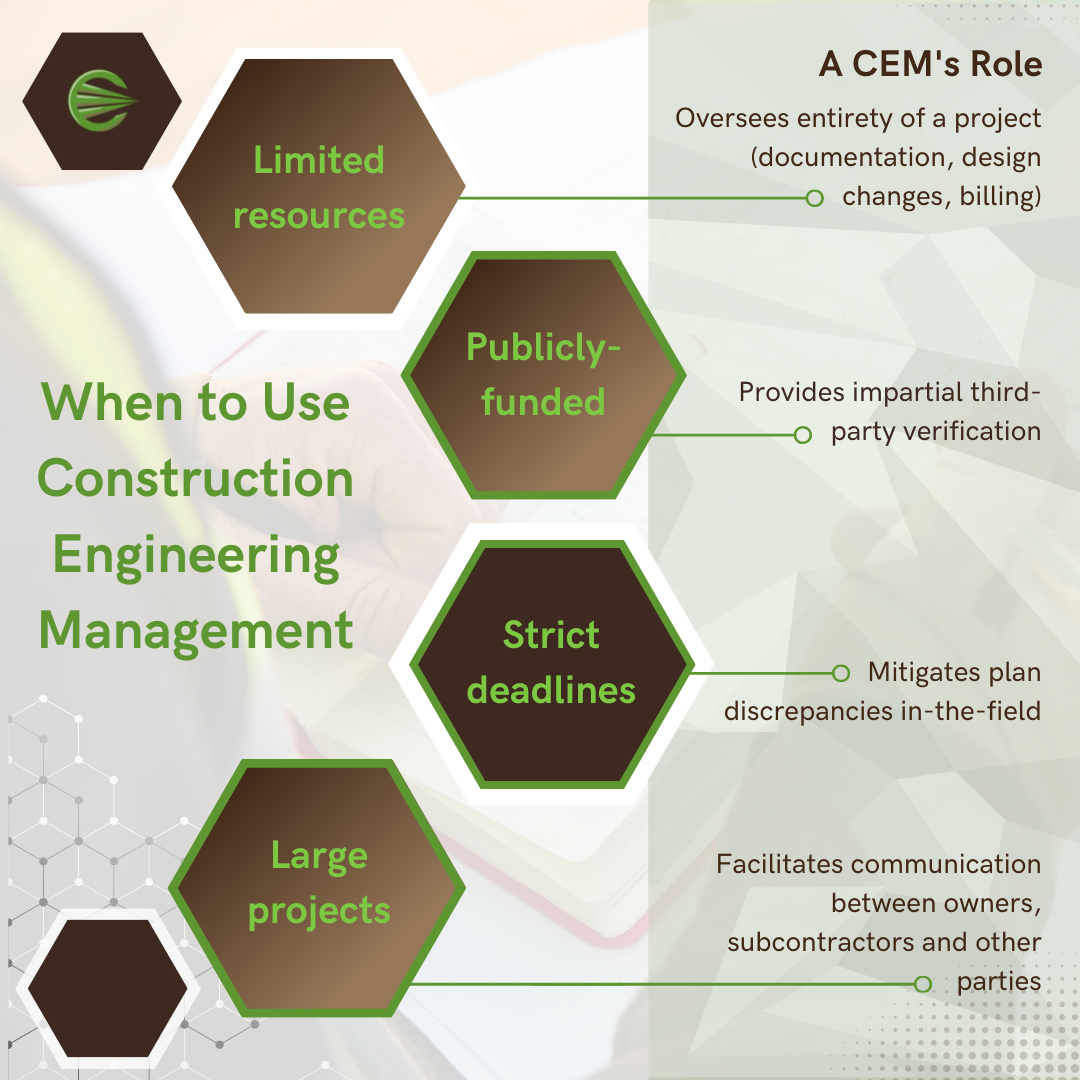Construction Engineering Management: A Timely, Impartial Construction Aide
Written by Marisa Marulli and Julia Ribeiro (Coffey Communications)
Reviewed by Jerrud Ralph, PE (Coffey Project Manager
Construction engineering management turns the element of design into physical reality. Construction engineering managers work alongside owners, designers and builders to optimize the construction of anything from affordable government housing to private shopping centers. Read on to learn more about this topic and its applications in the engineering and construction industries.
What is Construction Engineering Management (CEM)?
Construction engineering management (CEM) is usually a supplementary process brought into a construction project. While a civil engineer’s initial, or more obvious, place in the construction process is in designing the site plans, a CEM comes on board to perform process supervision once construction is underway.
Clients may ask to have a CEM as part of a project to improve its processes; a CEM’s critical engineering oversight can quickly mitigate obstacles that arise during construction and streamline procedures.
On top of facilitating smooth operations, CEMs support a project’s best interest by maintaining an impartial perspective as they work closely with owners, designers and contractors.
Applications of a Construction Engineering Manager
Publicly-funded projects: A CEM provides impartial third-party verification, which publicly funded projects usually require.
Large projects: Large projects need coordination between multiple contractors; having a CEM on duty facilitates communication between the owners and the subcontractors.
Strict schedules: If any issues arise with a project’s plans during the construction phase, a CEM is authorized to mitigate the issue by changing the plans in-the-field. This on-site expert’s adaptability can keep a project on-time.
Limited personnel resources: A CEM is beneficial for owners who are not able to manage the multitude of documents, contractors and site supervision involved with construction. A CEM takes responsibility for the whole project, allowing the owner and general contractor to focus on their specialties.
Why CEM with Coffey
Coffey starts a CEM project by sending a design engineer in the initial stages to grasp the idea of the client and establish communication with the contractor. Coffey engineers remain involved in the construction process by supervising on-site activities and supporting the techs’ day-to-day needs.
Having provided consulting solutions for over 70 years, Coffey's construction engineering management experience ranges from municipalities in need of impartial third party supervision to small companies looking for a professional to keep projects on-budget and on-time.
Thank you for reading our project summary related to Construction Engineering Management. If you are interested in the application of Construction Engineering Management for your project or have an inquiry about other civil engineering and land surveying services, we invite you to contact us by email or phone.




